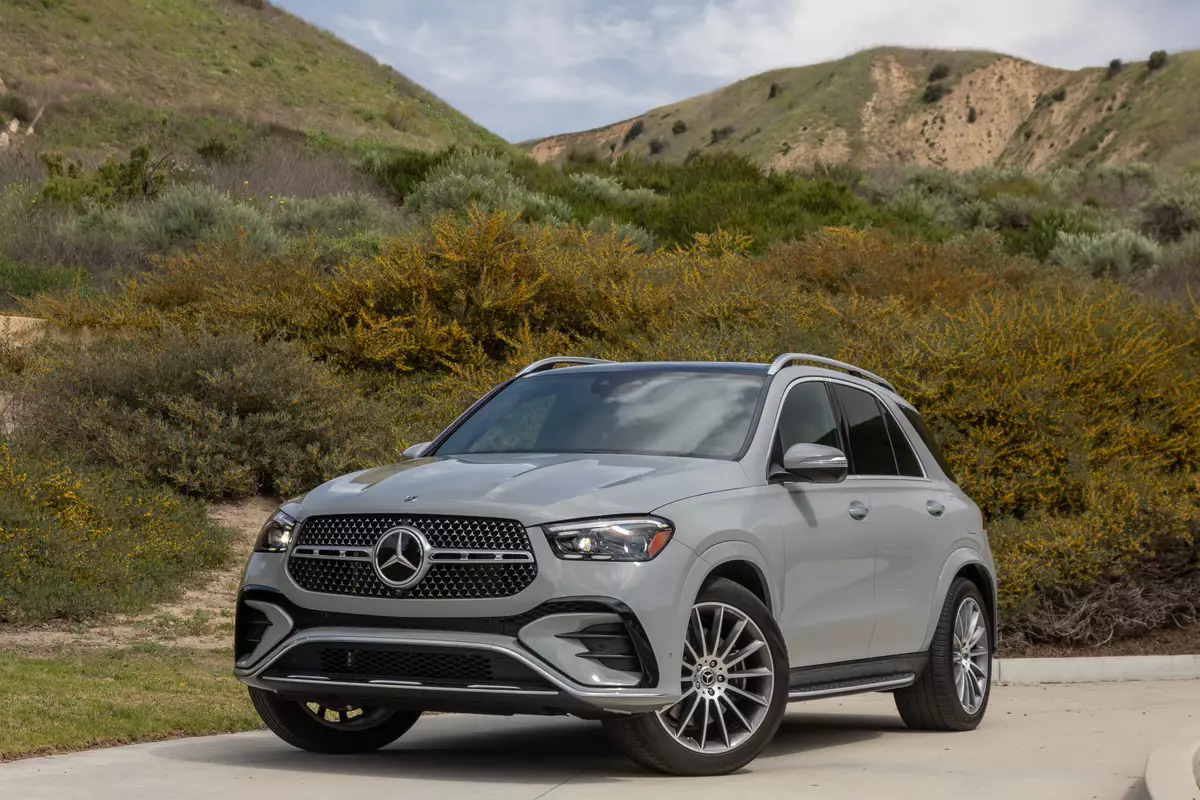
The verdict: With a preternaturally refined plug-in hybrid drivetrain, 48 miles of all-electric range and DC fast-charging capability, the 2024 Mercedes-Benz GLE450e is one of the nicest and most luxurious ways to ease yourself into the world of electric vehicles.
Versus the competition: While the GLE450e’s all-electric range isn’t as high as some competition, this Mercedes is a compelling choice if your focus is comfort and solid day-to-day performance, outperforming plug-in hybrid versions of the Lexus TX, BMW X5 and Volvo XC60.
Some popular rhetoric decries the continued rise of plug-in hybrids, with most arguments framed in the context of a purported “electric revolution” that automakers — and zealous electric-vehicle acolytes — say is right around the corner. The claim is that PHEVs are a horrendously over-complicated half-step toward electrification that are more a waste of time than a bridge between eras.
Related: Facelifted 2024 Mercedes-Benz GLE SUV Priced From $63,800, Coupe From $90,950
Hogwash. A week spent with the 2024 Mercedes-Benz GLE450e cemented in my mind that PHEVs aren’t just relevant, they’re nigh-on essential in the ongoing transition to electric driving. Consumers are hardly the most rational or, ah, objective bunch, but expecting everyone — including your mother, buddy, boss and dog — to wholesale jump into an ownership experience that’s more expensive and compromised than what they’ve (likely) known their whole motoring life is downright unrealistic.
PHEV Facts
You want to achieve full EV adoption with only partial legislation? PHEVs will help you get there. Both now and in the future, well-executed PHEVs are bridge vehicles that, under the right circumstances, allow customers to better understand their real-world driving habits and realize that a full-electric life might not be all that tricky.
PHEVs mean there’s no need to throw folks into the dark deep end; let ‘em test the temperature at the shallower part of the pool. Yes, the average American drives “just” 39.7 miles a day, according to Department of Transportation data, so EVs don’t really need more than 150 miles of range, but that’s not how car buying works. The average speed limit in California is 68 mph, so your 2023 Honda CR-V has no need for its 100-mph-plus top speed. Contemporary studies indicate only 25% of truck owners tow something more than once a year, so let’s only offer one truck model per manufacturer with a significant tow rating, right?
The reality is, car buying is often emotional, predicated on “potential” and “capability.” With 48 miles of electric-only range, the GLE450e has just enough juice to cover the average American’s commute without drinking a nip from the gas tank, while still offering the flexibility of a transcontinental road trip if you so desire. And while coast-to-coast road trips are likely as uncommon for the general public as towing a trailer of anvils or needing that triple-digit top speed, PHEVs like this Benz are a promising bridge to a full-EV reality.
All this before we get to the current state of America’s charging infrastructure. As highlighted during my recent Kia EV9 road trip from Los Angeles to Vegas, there’s a whole lot of work to be done before the grid and charging network is ready for primetime. A soft transition with PHEVs eases this load and prevents drivers — especially apartment dwellers — from paying the price if they get caught between charges.
SPHEVicificty
So what about this PHEV? Well, I clearly dug the GLE450e so much I had to issue that rant above. For my use case and how I drive, this GLE was as close to the platonic ideal as a luxury SUV could be. I used the Benz as a runabout from LA to Joshua Tree National Park, then on to Palm Springs, Calif., before swapping into a different test car, and it excelled at just about everything I asked of it.
The powertrain is the showcase here. A turbocharged 2.0-liter four-cylinder engine contributes 248 horsepower and 295 pounds-feet of torque, augmented by a transmission-mounted electric motor that makes 134 hp and 325 pounds-feet for a combined — deep breath — 381 hp and 479 pounds-feet of torque. Strong figures, though with a Chevy Suburban-matching curb weight of 5,754 pounds, this girthy SUV uses every pony and ounce of twist to move its mass. And move it does, with a Mercedes-estimated 0-60 mph time of 5.8 seconds.
In practice, that feels like a very idealized figure. The GLE450e has plenty of pep for its intended purpose, zipping down on-ramps and through passing zones with confidence to spare. Because I had a fairly packed schedule between its delivery and return, I used the GLE more like a standard hybrid than a plug-in, draining its all-electric range on the traffic-clogged journey to Palm Springs then driving it in Hybrid mode thereafter.
Dropped Charges
Given my PHEV diatribe, you could consider my use of the GLE hypocritical. Fair enough, though I’ll also freely admit that a zero-state battery is likely the most common level of charge the average plug-in owner will experience in day-to-day driving, unless they make an effort to plug in every night. In the mostly gridlocked journey between LA and an overnight stay in Joshua Tree, I observed an all-electric range of around 40 miles, which is a bit less than the SUV’s 48-mile estimate.
Pure Powertrain
That’s not bad, but it was the general demeanor and refinement of the GLE450e’s powertrain that impressed the most. One nonnegotiable of a well-executed PHEV — and of most “regular” hybrids, too — is the isolation of the internal-combustion portion of the powertrain. Specifically, sustained smoothness, even with the constant on/off ignition cycle, is what makes a good hybrid.
In typical Mercedes fashion, the vibrations from the GLE’s 2.0-liter four-cylinder were as damped and managed as anything this side of six-figures; the system offered seamless transitions between gas and electric propulsion regardless of accelerator application. Even with an aggressive start, the four-banger spun to life with nary a lurch nor bump, while simultaneously returning a rather hysterical turbocharged whistle that belies this car’s performance, poise and purpose.
Even when filled with friends and luggage, there was never a moment when this Mercedes felt remotely oversaddled. Not that my folks would have noticed; the GLE’s lovely cabin was a total crowd pleaser in every aspect, and my crew couldn’t stop playing with the SUV’s myriad tech doodads, ogling the appointments and cheering over the optional massaging front seats. The optional mocha leather and complementing wood trim was a particularly handsome combination, and the center console’s retractable, sliding tray door with segmented wood trim was a nifty little detail that was futzed with by more than one front-seat rider.
Tech was also a showcase, though the dual 12.3-inch screens serving as the driver display and center infotainment system are a far cry from the Mercedes-EQ’s Hyperscreen and the new Mercedes E-Class’ Superscreen. That’s perfectly fine by me. The GLE’s digital real estate was more than enough for our purposes, and it was perfectly complemented by a modest array of hard controls that made menu and function navigation simple.
More From Cars.com:
- 2024 Mercedes-Benz GLE Gains PHEV, Off-Road Tech
- Mercedes-Benz Recalls 116,000 GLE, GLS SUVs Over Fire Risk
- What’s New With SUVs for 2024?
- Research the 2024 Mercedes-Benz GLE450e
- Shop for a 2024 Mercedes-Benz GLE450e
Riding Refinement
The on-road driving experience matched the powertrain for smoothness — to a degree that might not be to everyone’s taste. Steering is effortless, nearly devoid of any granularity in its feel. It’s artificially weighted to the point of creaminess — which is a good match for this SUV’s nonsporting character. The brakes were a tad mushy, but I chalk that up to the GLE450e’s blend of physical braking hardware and regenerative braking function; it can be mostly forgiven. Despite this vehicle’s hefty(ish) electric range, off-pedal regenerative braking is minimal.
All this squish made sense with my test car’s optional air suspension, a pillowy, adaptive setup that’s just the right side of floaty. In any setting, body control and bump absorption were excellent, with only a puff of excessive lean when I was driving needlessly aggressively.
It’s a supremely comfortable ride, made near-sublime in Southern California traffic by the GLE’s optional Active Stop-and-Go Assist. It’s a damn impressive system; when engaged, Mercedes’ adaptive cruise control can manage start-and-stop traffic at speeds up to 37 mph, and it can hold the SUV at a stop for up to one minute. Paired with the massaging seats set to high, it created one of the most effective traffic lobotomizing experiences I’ve had to date.
I’m a fan. If I needed a no-nonsense, unsporting, ultra-comfy, do-everything luxury daily driver, the GLE450e would be near the top of my list. Just keep an eye on that options list, as my very well-equipped test vehicle broke the scale at $90,530. Not to say it’s not worth that money — it’s easily one of the nicest mid-size luxury SUVs available — but $20,000 of extras is a lot to add to this car’s starting price.
An electrified half-measure? Let’s just call it EV training wheels.
Related Video:
We cannot generate a video preview.
Cars.com’s Editorial department is your source for automotive news and reviews. In line with Cars.com’s long-standing ethics policy, editors and reviewers don’t accept gifts or free trips from automakers. The Editorial department is independent of Cars.com’s advertising, sales and sponsored content departments.





























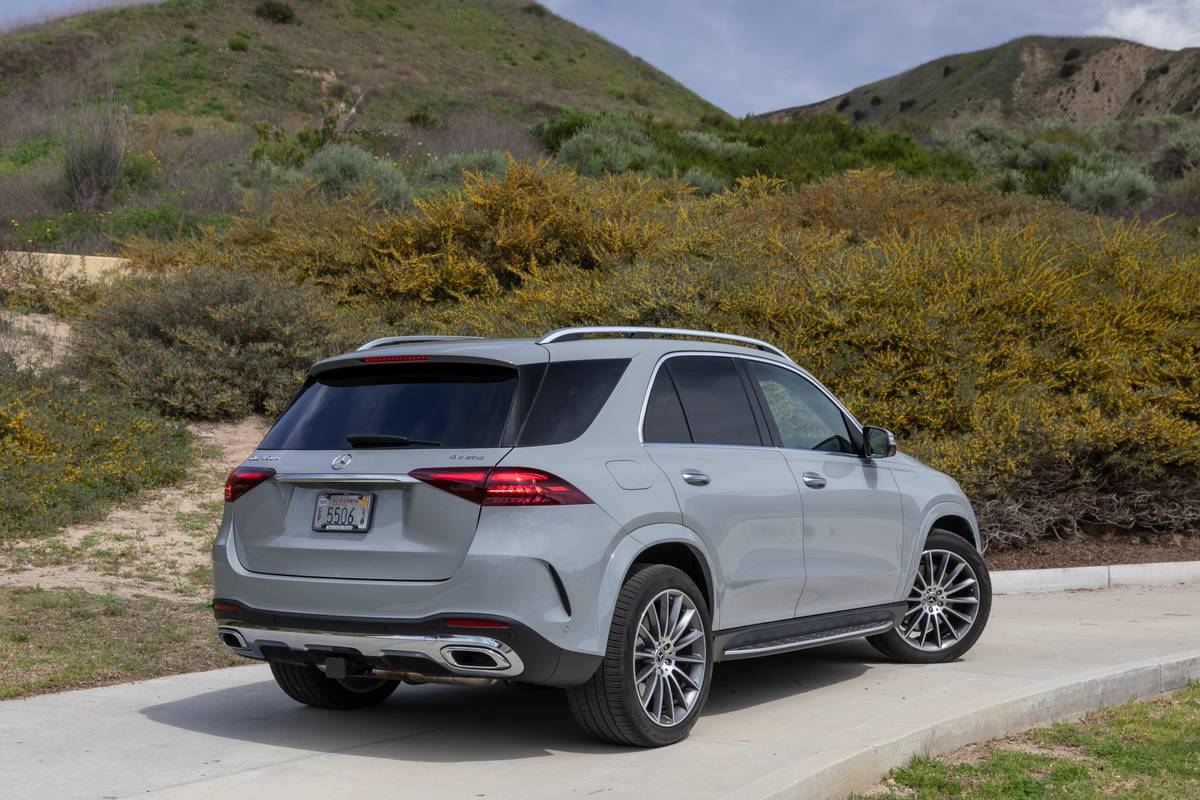
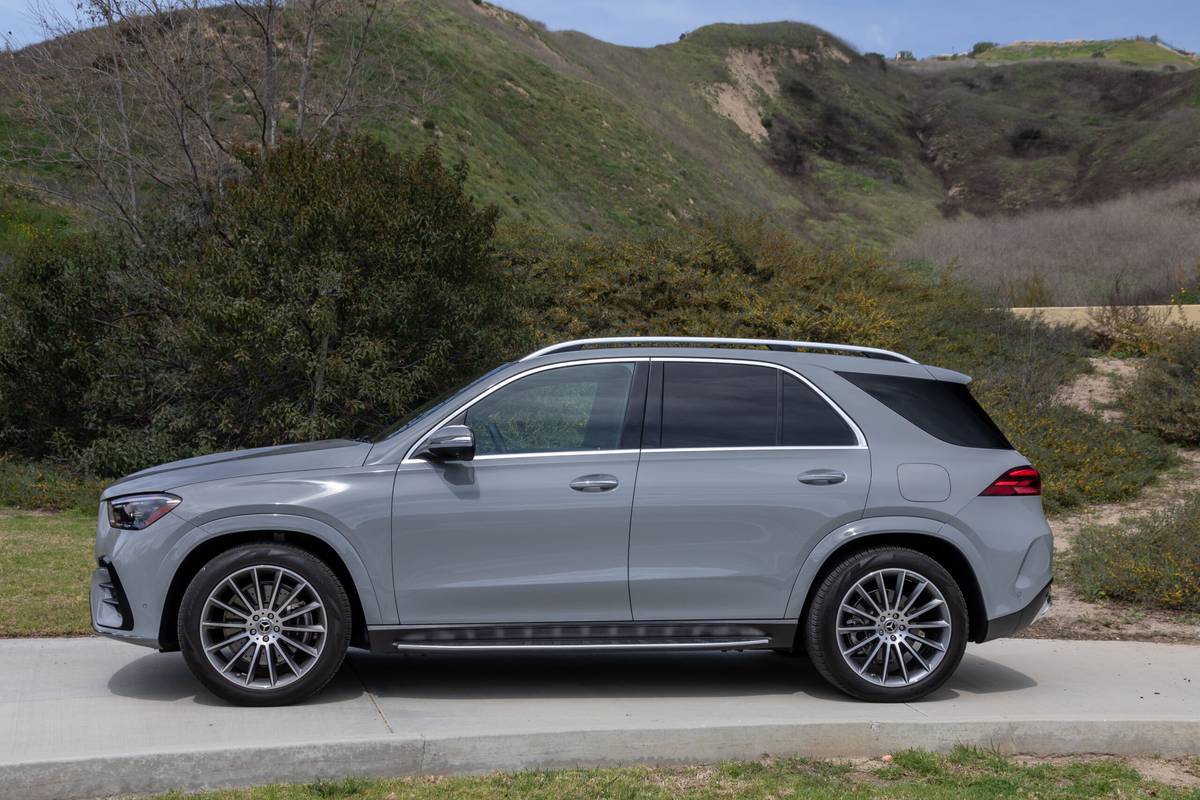
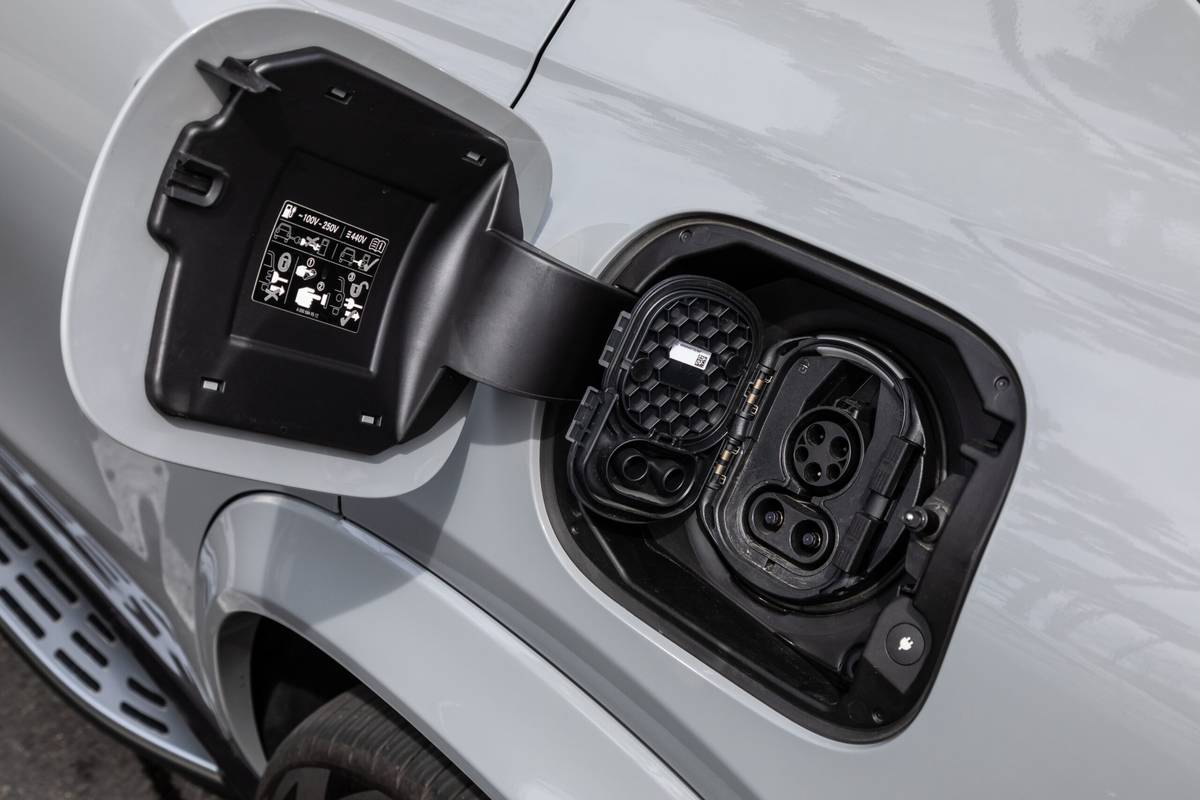


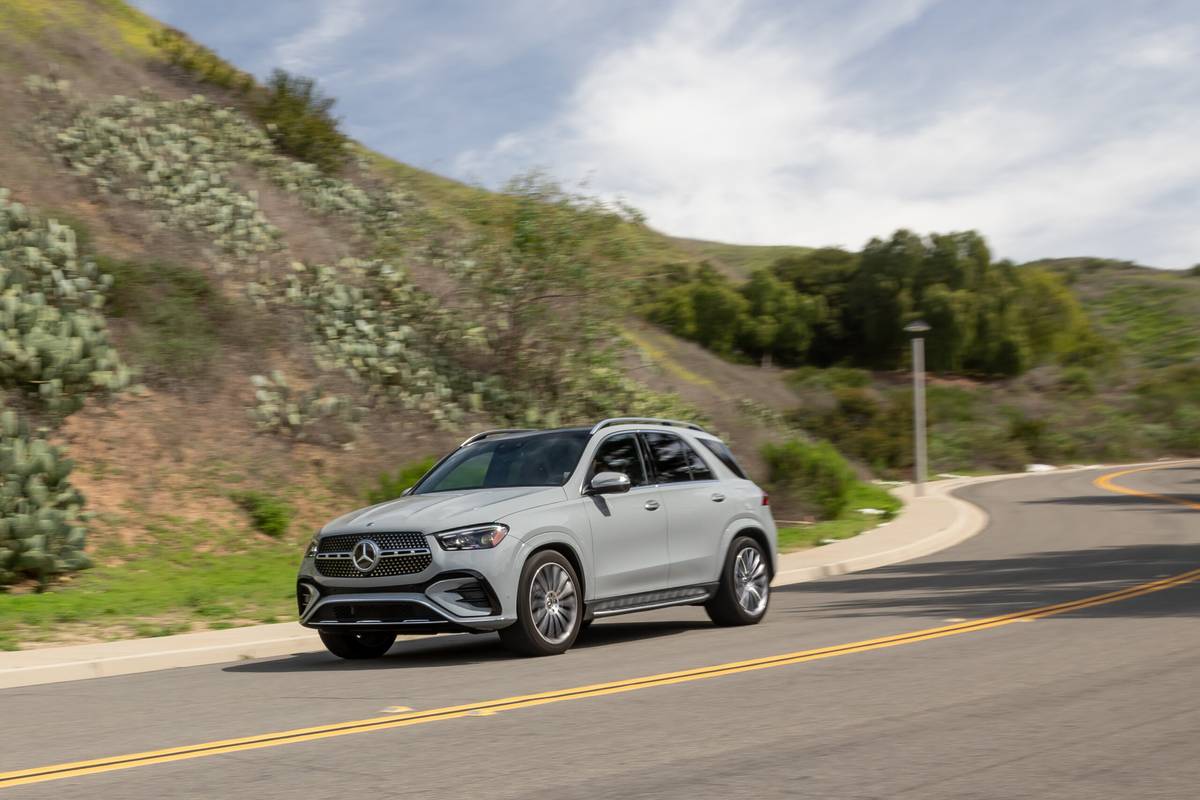







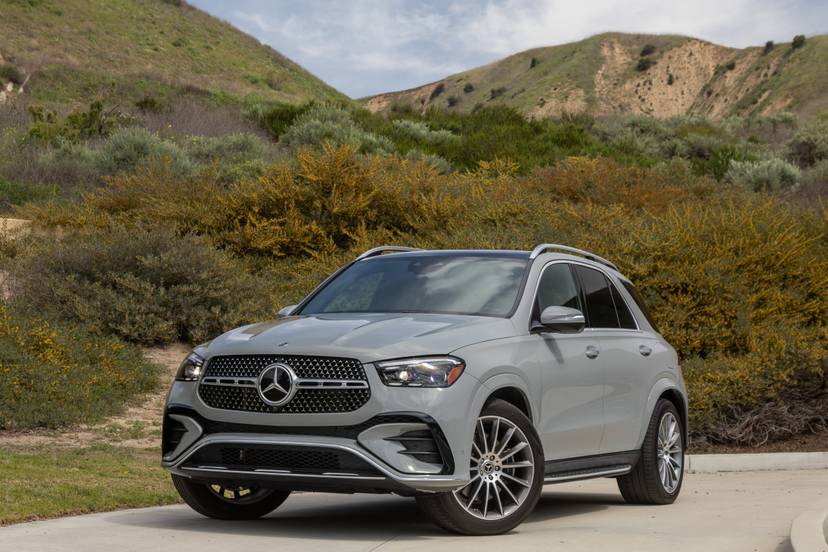
.png)